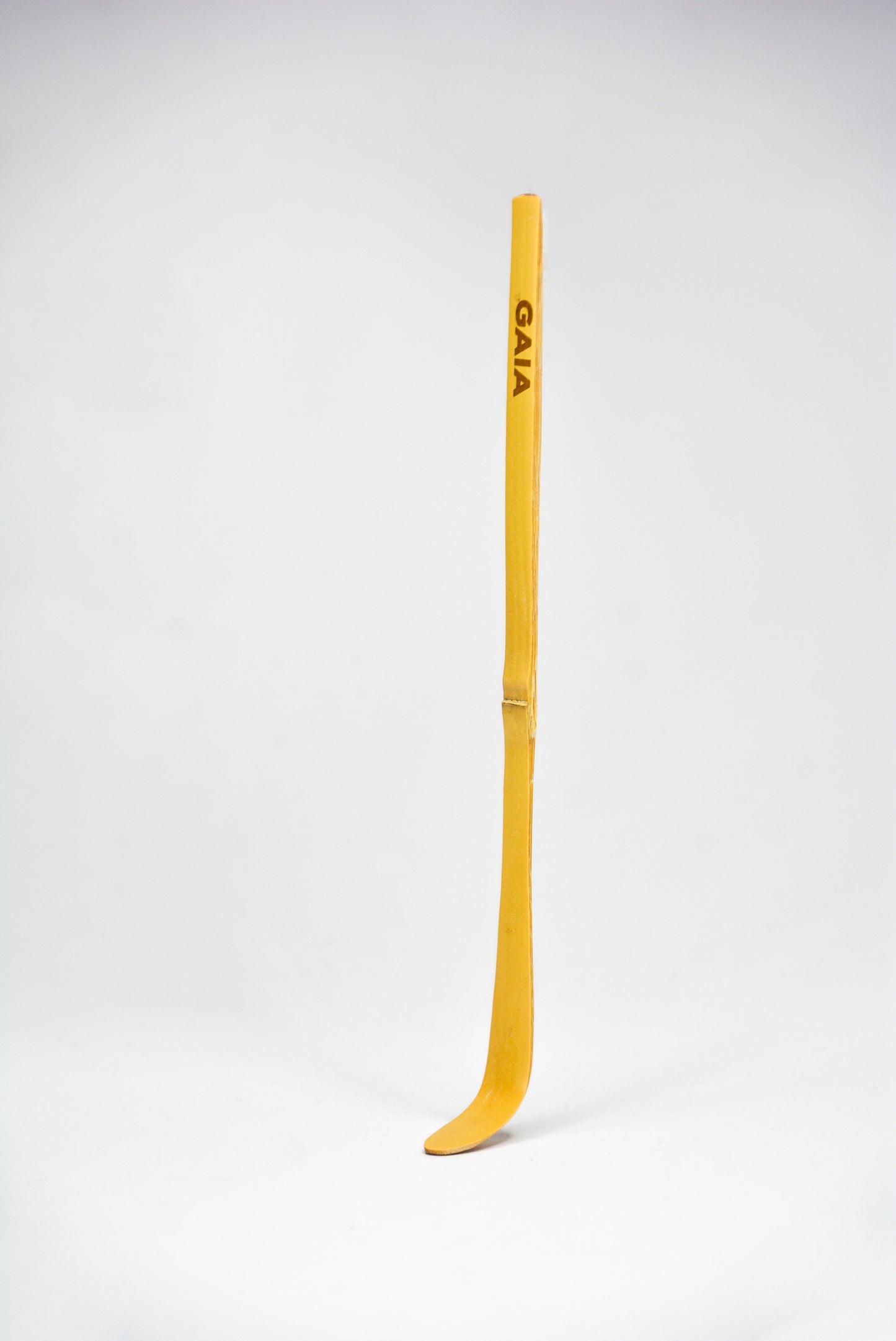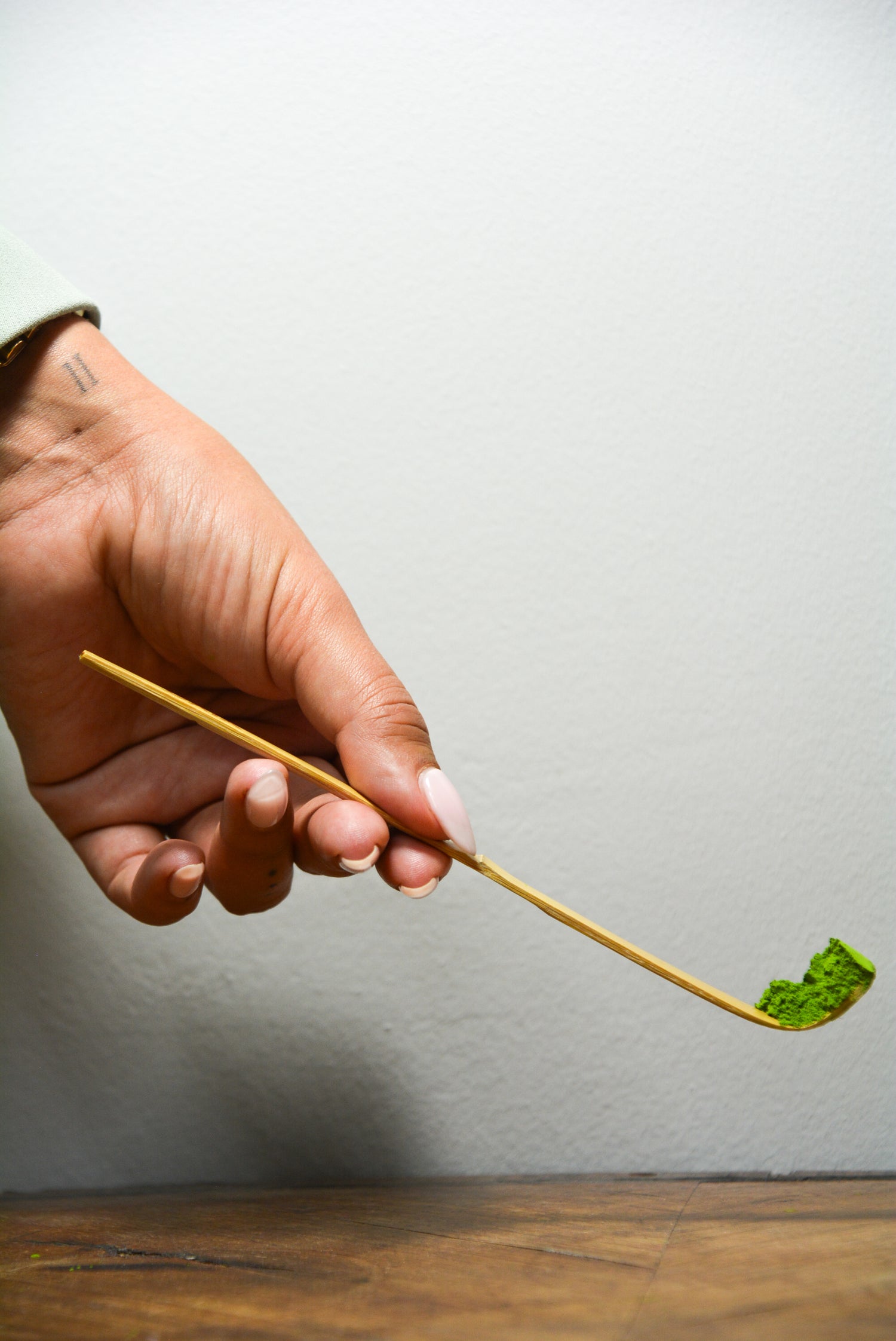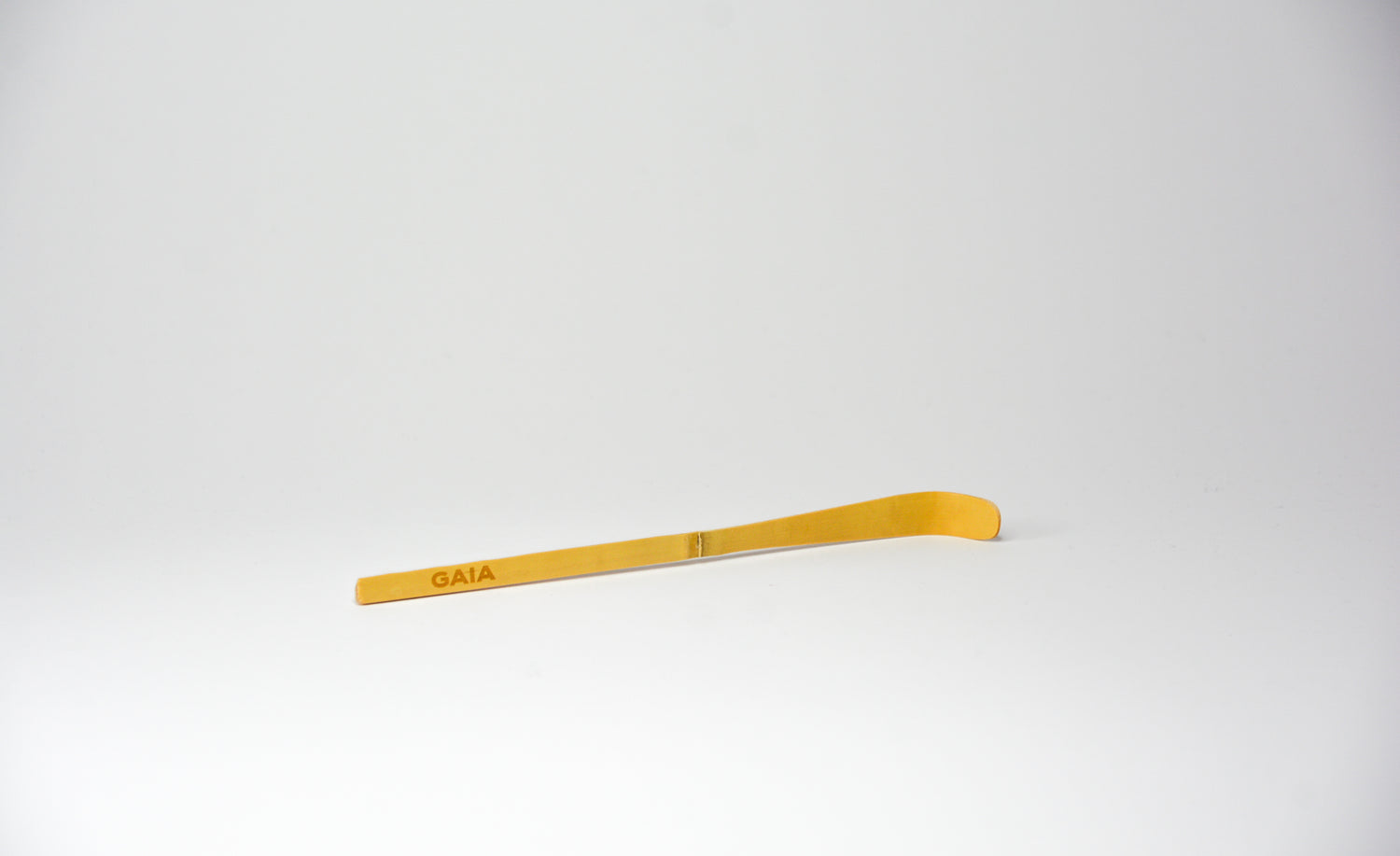

How To Brew
1. Sift your matcha: If you have it by hand, use a fine mesh sieve to sift 1–2 scoops of matcha powder into a bowl. This prevents clumps and ensures a smooth, creamy textur
2. Heat the water: Heat filtered water to about 80°C (175°F). Avoid boiling water, as it can make the matcha taste bitter. Let it cool for a minute if it’s too hot.
3. Add matcha to your water: Pour a small amount (about 2 ounces/60 ml) of the hot water over the matcha powder in the bowl.
4. Whisk: Using a bamboo whisk (chasen), whisk briskly in a zigzag motion (M or W shape) until the matcha is frothy and small bubbles form on the surface. This should take about 20 seconds. The motion should come from your wrist, not your elbow.
5. Adjust water to taste: For a thicker matcha (koicha), use less water. For a thinner consistency (usucha), add more hot water to your preference, up to 6 ounces/180 ml.
6. Optional: You can also add a bit of sweetener or milk (like oat or almond milk) if you prefer a matcha latte. Enjoy!
7. Enjoy: Sip slowly and savor the rich, umami flavor and creamy texture of your perfect matcha!

Cleaning Instructions
1. Rinse Immediately: After use, rinse the spoon under lukewarm water to remove any matcha residue.
2. Gently Clean: Avoid using soap or scrubbing. Lightly use your fingers to clean the spoon.
3. Shake Off Water: Shake off excess water gently and pat the spoon with a soft towel if needed.
4. Air Dry: Place the spoon on its base to air dry completely.
Guaranteed Benefits, Guaranteed Outcomes
87%
Experienced More Glowing and Healthier Skin
*Based on a four-week independent customer panel
93%
Reported Improved Focus and Concentration
*Based on a four-week independent customer panel
85%
Noticed Improved Mood and Overall Mental Well-being
*Based on a four-week independent customer panel
Let customers speak for us
Complete Your Matcha Ritual
Frequently Asked Questions
Matcha is a finely ground powder made from specially grown and processed green tea leaves. It’s traditionally used in Japanese tea ceremonies and offers a unique combination of taste and health benefits.
Ceremonial matcha is the highest quality, enjoyed on its own for its smooth, delicate, and rich umami flavor. In contrast, culinary or premium matcha is a much lower grade, with a bitter and robust taste. It’s less suitable for drinking straight and better used in recipes like lattes, desserts, or smoothies.
No, matcha contains caffeine, but in lower concentrations compared to coffee. The caffeine in matcha is absorbed slowly, providing a stable energy boost without the typical “crash".
To preserve its quality, store matcha in an airtight container in a cool, dry place, away from direct sunlight and strong odors.
Quality Grade: Ceremonial grade is made from the youngest, most tender leaves, resulting in a smooth, rich flavor, while culinary grade is more bitter and used for cooking.
Growing Conditions: Matcha from regions like Uji or Nishio in Japan is often pricier due to ideal growing conditions.
Shading & Harvesting: High-quality matcha is shaded for weeks and carefully hand-picked, enhancing flavor and nutrients.
Grinding Method: Ceremonial matcha is stone-ground, which preserves nutrients but is time-consuming.
Organic Certification: Organic matcha is more costly due to strict farming and certification standards.
While matcha has health benefits, it’s essential to limit caffeine intake during pregnancy. Always consult with a healthcare professional for personalized advice.














